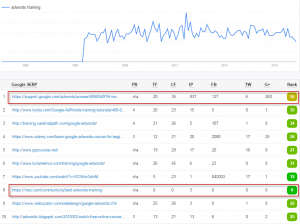There are assumptions about team members with specialties and those that can perform all functions. But what works in one situation may not make sense in another. Here’s why.
During Discover MarTech in April, I moderated a Birds of a Feather session about Scott Brinker’s new martech role types. One of the participants brought up an interesting idea of how martech practitioners relate to the four role types – maestro, marketer, modeler, and maker. They wondered how this could relate to the T/I-shape concepts from the Scrum framework of Agile project management.
My fellow contributor Stacey Ackerman specializes in Agile Marketing, and I’ll defer to her for more thorough discussions regarding that topic. However, I’ll quickly explain two quick points. The Scrum framework makes assumptions about the development of team members. There are at least two types of assumptions. First, the T-shaped team member is someone who is able to perform all of the functions and skills required of the team (programming, QA, infrastructure maintenance, etc.), but they specialize in one but can at least satisfactorily perform the others. Second, the I-shaped member not only specializes in one function/skill, they can only perform that one. No one perfectly fits into one type. Further, there are pros and cons to these assumptions.
The session participant wonders how this applies to martech practitioners and how their function lands among the types of roles. Perhaps it is also just as important to ask if martech practitioners should operate as T- or I-shaped individuals.
The two axes of Brinker’s quadrants focus on internal vs. external focus and process or technical involvement. It’s important for every practitioner to understand at a high level the issues each type of practitioner addresses. However, there are practical limitations preventing individuals from working in all four.
For instance, the modeler requires advanced quantitative skills and judgment to function effectively. While not unheard of, I bet the set of people who are both superb copywriters in the marketer quadrant and esteemed data analysts is small. One position requires creativity and a strong command of language while the data analyst is much more quantitative in nature. One interesting concern of the T-shaped individual in this sense is that a little quantitative expertise is both empowering and dangerous. To paraphrase an adage, one can prove almost anything with statistics. Thus, data in improper hands can sometimes lead to disastrous decisions. Further, aside from command of grammar, more people think that they can draft persuasive prose than actually can. Therefore, I think that T-shaped practitioners need to proceed with caution in areas that they don’t specialize in.
On the other hand, the I-shaped practitioner also faces challenges. For instance, they will need to rely upon other specialists whose priorities may not align with theirs. That can lead to frustration and confusion about priority and direction. Further, marketing and technology are vast realms. A writer may draft grammatically correct and eloquent prose, but sometimes such content counterintuitively doesn’t inspire people to the marketers’ desired behavior. So, it is helpful if the writer can at least conduct basic interpretation of the campaign performance dashboards to tailor their copy to what the audience responds to.
In either case, clear expectations of responsibilities are crucial. For instance, who is primarily responsible for a task? When is it ok for someone to step out of their specialty to get something done quickly? On a side note, a RACI (responsible, accountable, consulted, and informed) analysis and chart can help with this, which another session participant suggested.
Another participant made the important point that all practitioners need to understand the path of data collected. They need to know which system collected it and how it flows to other systems. Further, they need to understand the ramifications of that flow. For example, what if multiple systems send automated promotional emails? What happens if someone through their CAN SPAM Act granted right unsubscribed? Does that apply to that specific system or all of them? How are specific and global preferences managed? Practitioners working in all four types need to understand at a high-level of what’s involved in this scenario. Regardless if a practitioner operates as a T/I-shape individual or jack of all trades, they need to at least have the ability to understand data flow from the perspective of all four quadrants.
Since this categorization framework is still new, we’re still figuring out how each practitioner relates to each category as well as situational circumstances. The important thing to note is there are advantages and disadvantages to adopting the T- or I-shape assumptions. What works in one situation may not make sense in another.
Opinions expressed in this article are those of the guest author and not necessarily Marketing Land. Staff authors are listed here.
Marketing Land – Internet Marketing News, Strategies & Tips
(9)







